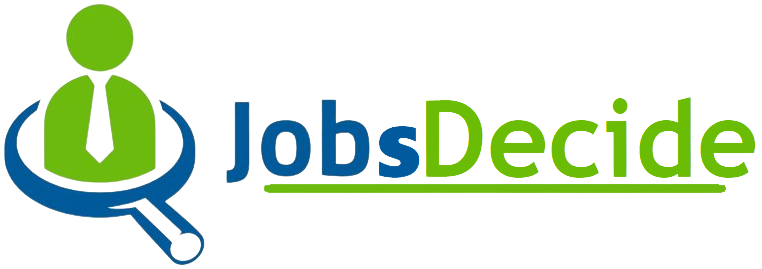PART-I ((MCQs) (COMPULSORY)
Q.1. (i) Select the best option/answer and fill in the appropriate Circle on the OMR Answer Sheet. (20x1=20)
(ii) Answers given anywhere, other than OMRAnswer Sheet, shall not be considered.
1. Who defined Public Administration as “detailed and systematic application of law”?
(a)Herbet A. Simon (b)Woodrow Wilson (c) Luther Gulick (d)None of these
2. Government is a “sovereign factor in administration.” This was stated by:
(a)L.D. White (b)J.H. William (c) H. Finer (d)None of these
3. The Rule of Business of Federal Government are read with the Secretariat Instructions issued under rule
___________of the Rule of Business.
(a)5(15) (b)15(5) (c) 15(15) (d)None of these
4. Management is a ____________use of resources.
(a)Proper (b)Systematic (c) Maximum (d)None of these
5. Who wrote the book “Politic and Administration”.
(a)Woodrow Wilson (b)Willoughby (c) Goodnow (d)None of these
6. Who among the following defined civil services as “professional body of officials, permanent, paid and
skilled”?
(a)Ogg and Zink (b)Herman Finer (c) L.D. White (d)None of these
7. The traditional theory of motivation is the theory of:
(a)Path-goal (b)Participation (c) Motivation hygiene (d)Fear and punishment
8. Communication techniques according to Barnard are important because through them:
(a)The zone of indifference of the contributor is enlarged.
(b)The foundation for the formal authority structure is laid.
(c) The form and the internal economy of an organization is shaped.
(d)The different patterns of informal organization are harmonized.
9. A course of action governed by the rules and regulation is known as:
(a)Decision as per rules (b)A management decision
(c) A guided decision (d)A programmed decision
10. Who among the following has defined leadership as “Activity of influencing people to drive willingly
for group objectives”?
(a)Peter Drucker (b)F.E. Feilder (c) Pfiffner and Sherwood (d)None of these
11. Who has analyzed leadership in terms of “Circular response”?
(a)C.I. Barnard (b)M.P. Follett (c) Taylor (d)None of these
12. Who wrote the book “Towards a New Public Administration: The Minnow book perspective”?
(a)Frank Marini (b)Dwight Waldo (c) C.J. Charles Worth (d)None of these
13. Who defined organization as “Consciously coordinated co-operative system”?
(a)Henri Fayol (b)Chris Argyris (c) Chester Barnard (d)None of these
14. Who among the following defined coordination as “the integration of several parts into an ordinary
whole to achieve the purpose of undertaking”?
(a)L.D. White (b)Charles Worth JC (c) G.R. Terry (d)None of these
15. The second highest economic decision making authority in Pakistan is:
(a)NEC (b)ECNEC (c) CDWP (d)None of these
16. Who among the following defined communication as “shared understanding of shared purpose”?
(a)Tead (b)Sirk H.L. (c) J.D. Millet (d)None of these
17. Line agencies perform____________ activities in an organization.
(a)Advisory (b)Supervisory (c) Informative (d)None of these
18. The Relay Assembly Test Room Experiments were conducted to test the relationship between:
(a)Productivity and social relationship (b)Productivity and working condition
(c) Productivity and economic incentives (d)None of these
19. Who among the following is the founder of zero based budgeting?
(a)L.D. White (b)Lyndon Johnson (c) Peter A. Phyrr (d)None of these
20. Span of control means:
(a)Number of superior over the subordinates (b)Number of subordinates under a superior
(c) Number of officials with a superior (d)None of these
PART-II
NOTE: (i) Part-IIis to be attempted on the separate Answer Book.
(ii)Candidate must write Q. No.in the Answer Bookin accordance with Q. No.in the Q. Paper.
(iii)Attempt ONLY FOUR questions from PART-II. ALL questions carry EQUAL marks.
(iv) Extra attempt of any question or any part of the attempted question will not be considered.
*************
Q.2. What is planning? Why are the disadvantages of planning called potential
disadvantages? Outline the relationship among the six steps in the planning process.
(20)
Q.3. Discuss the role of social media in implementing public accountability in the
developing societies like Pakistan.
(20)
Q.4. Transactional and transformational leadership styles are suggested for political leader.
Which one is better for Pakistan and why?
(20)
Q.5. What are the communication issues for the Citizen-Government relationship in
Pakistan?
(20)
Q.6. What is the difference between power and authority?Describe the role of power in the
control process.
(20)
Q.7. Elaborate the interference of Hallo effect and stereotyping in the recruitment of
knowledge workers.
(20)
Q.8. Write notes on any TWOof the following:-
(a) Role of public administration in modern welfare state
(b) Ecology of Bureaucracy
(c)Problems of coordination in public administration in Pakistan
(d) Performance budgeting
(10 each) (20)
Q.1. (i) Select the best option/answer and fill in the appropriate Circle on the OMR Answer Sheet. (20x1=20)
(ii) Answers given anywhere, other than OMRAnswer Sheet, shall not be considered.
1. Who defined Public Administration as “detailed and systematic application of law”?
(a)Herbet A. Simon (b)Woodrow Wilson (c) Luther Gulick (d)None of these
2. Government is a “sovereign factor in administration.” This was stated by:
(a)L.D. White (b)J.H. William (c) H. Finer (d)None of these
3. The Rule of Business of Federal Government are read with the Secretariat Instructions issued under rule
___________of the Rule of Business.
(a)5(15) (b)15(5) (c) 15(15) (d)None of these
4. Management is a ____________use of resources.
(a)Proper (b)Systematic (c) Maximum (d)None of these
5. Who wrote the book “Politic and Administration”.
(a)Woodrow Wilson (b)Willoughby (c) Goodnow (d)None of these
6. Who among the following defined civil services as “professional body of officials, permanent, paid and
skilled”?
(a)Ogg and Zink (b)Herman Finer (c) L.D. White (d)None of these
7. The traditional theory of motivation is the theory of:
(a)Path-goal (b)Participation (c) Motivation hygiene (d)Fear and punishment
8. Communication techniques according to Barnard are important because through them:
(a)The zone of indifference of the contributor is enlarged.
(b)The foundation for the formal authority structure is laid.
(c) The form and the internal economy of an organization is shaped.
(d)The different patterns of informal organization are harmonized.
9. A course of action governed by the rules and regulation is known as:
(a)Decision as per rules (b)A management decision
(c) A guided decision (d)A programmed decision
10. Who among the following has defined leadership as “Activity of influencing people to drive willingly
for group objectives”?
(a)Peter Drucker (b)F.E. Feilder (c) Pfiffner and Sherwood (d)None of these
11. Who has analyzed leadership in terms of “Circular response”?
(a)C.I. Barnard (b)M.P. Follett (c) Taylor (d)None of these
12. Who wrote the book “Towards a New Public Administration: The Minnow book perspective”?
(a)Frank Marini (b)Dwight Waldo (c) C.J. Charles Worth (d)None of these
13. Who defined organization as “Consciously coordinated co-operative system”?
(a)Henri Fayol (b)Chris Argyris (c) Chester Barnard (d)None of these
14. Who among the following defined coordination as “the integration of several parts into an ordinary
whole to achieve the purpose of undertaking”?
(a)L.D. White (b)Charles Worth JC (c) G.R. Terry (d)None of these
15. The second highest economic decision making authority in Pakistan is:
(a)NEC (b)ECNEC (c) CDWP (d)None of these
16. Who among the following defined communication as “shared understanding of shared purpose”?
(a)Tead (b)Sirk H.L. (c) J.D. Millet (d)None of these
17. Line agencies perform____________ activities in an organization.
(a)Advisory (b)Supervisory (c) Informative (d)None of these
18. The Relay Assembly Test Room Experiments were conducted to test the relationship between:
(a)Productivity and social relationship (b)Productivity and working condition
(c) Productivity and economic incentives (d)None of these
19. Who among the following is the founder of zero based budgeting?
(a)L.D. White (b)Lyndon Johnson (c) Peter A. Phyrr (d)None of these
20. Span of control means:
(a)Number of superior over the subordinates (b)Number of subordinates under a superior
(c) Number of officials with a superior (d)None of these
PART-II
NOTE: (i) Part-IIis to be attempted on the separate Answer Book.
(ii)Candidate must write Q. No.in the Answer Bookin accordance with Q. No.in the Q. Paper.
(iii)Attempt ONLY FOUR questions from PART-II. ALL questions carry EQUAL marks.
(iv) Extra attempt of any question or any part of the attempted question will not be considered.
*************
Q.2. What is planning? Why are the disadvantages of planning called potential
disadvantages? Outline the relationship among the six steps in the planning process.
(20)
Q.3. Discuss the role of social media in implementing public accountability in the
developing societies like Pakistan.
(20)
Q.4. Transactional and transformational leadership styles are suggested for political leader.
Which one is better for Pakistan and why?
(20)
Q.5. What are the communication issues for the Citizen-Government relationship in
Pakistan?
(20)
Q.6. What is the difference between power and authority?Describe the role of power in the
control process.
(20)
Q.7. Elaborate the interference of Hallo effect and stereotyping in the recruitment of
knowledge workers.
(20)
Q.8. Write notes on any TWOof the following:-
(a) Role of public administration in modern welfare state
(b) Ecology of Bureaucracy
(c)Problems of coordination in public administration in Pakistan
(d) Performance budgeting
(10 each) (20)






